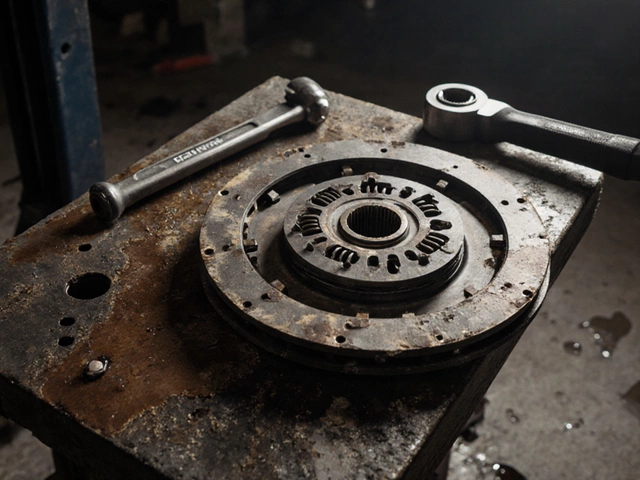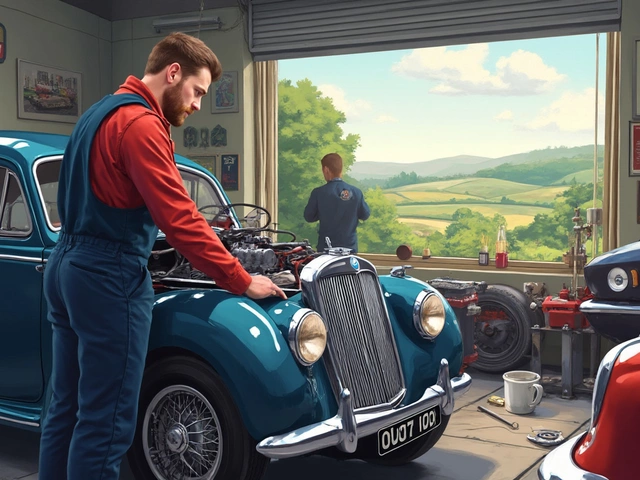So, you've got a 300 horsepower beast under the hood, and you're itching to fine-tune its performance with the right exhaust system. But how big should that exhaust be? Turns out, size does matter when it comes to exhausts—especially if you're aiming for that sweet spot between performance and efficiency.
The exhaust diameter directly affects how gases flow out of your engine. Too small, and you'll choke your engine; too big, and you might lose some low-end torque. It's a balancing act, folks. Most experts suggest a diameter around 2.5 to 3 inches for a 300 hp setup, but nuances in your car's specifics could tweak that a bit.
It's not just about the numbers, though. The sound, the power delivery, and even the longevity of both your engine and exhaust system can shift depending on your setup. And let's not forget about the materials; stainless steel might cost more upfront, but it's going to handle heat like a champ over the long haul.
Understanding Exhaust Diameter
When it comes to the exhaust system on your vehicle, especially for an engine pushing 300 hp, the diameter is a big deal. Imagine trying to breathe through a straw versus a garden hose. That's sort of the deal here. You need the right size to let those exhaust gases flow freely but not too free that you lose power where it counts.
The Basics of Exhaust Diameter
For 300 hp, most folks will tell you a 2.5 to 3-inch diameter works well. But, why? The diameter determines how quickly the exhaust gases exit the engine, impacting back pressure and overall performance. Less back pressure usually means more power, but if you go too big, you risk dropping your low-end torque, especially in smaller engines.
Finding the Sweet Spot
Consider how you plan to use your car. Daily driver? Occasional track visits? Your use dictates your diameter choice. A 2.5-inch exhaust might be enough if you're just cruising, but 3 inches could provide that extra push you need for more aggressive driving or modifications down the road.
Why Not Bigger?
Too large an exhaust can be just as problematic. Not only might you lose some low-end power, but you could also face increased noise that isn't always pleasant. Plus, there's the weight factor—heavier systems can slow you down.
| HP Level | Recommended Diameter |
|---|---|
| 200-250 HP | 2.25 inches |
| 250-300 HP | 2.5 to 3 inches |
| 300+ HP | 3 inches+ |
Choosing the right exhaust size for your car performance isn't just about number crunching. It’s all about balance. If you're upgrading your exhaust with hopes of improving performance, keeping these facts in mind can help prevent you from getting bogged down by too much or too little diameter.
Impact on Performance
Getting the right exhaust size for your 300 hp engine isn't just about sound and style—it's about squeezing every ounce of performance from your setup. The size of your exhaust directly influences how your car breathes, affecting everything from horsepower to fuel efficiency.
When your engine can expel exhaust gases more efficiently, it can perform better, offering you that spirited drive you crave. A well-sized exhaust helps maintain an appropriate exhaust velocity, which in turn supports scavenging, where the outgoing exhaust wave helps draw in the next intake charge. Basically, it's like giving your engine a deep breath of fresh air.
Finding the Balance
While a larger exhaust system might sound exciting—literally and figuratively—bigger isn't always better. If your exhaust is too wide, gases may move sluggishly at lower RPMs, and you'd miss that punchy low-end torque. That's why finding that sweet spot, usually around 2.5 to 3 inches for 300 hp, is crucial.
"The right exhaust diameter is pivotal for maintaining back pressure, which affects torque and horsepower," says automotive expert James Turner from Car Performance Journal.
Improper back pressure can lead to a variety of performance issues. For example, insufficient back pressure might lead to slower acceleration from a standstill, making those city drives less thrilling.
Material Matters
Beyond size, the material of your exhaust can play a big role. Stainless steel might pinch your wallet a bit more, but it's less prone to rust and handles heat better, resulting in less performance drop over time. This means your 300 horsepower engine stays closer to its potential for longer.
To sum it up, when you balance size, material, and design within your exhaust system, you'll notice not just in straight-line speed, but also in handling, fuel efficiency, and overall reliability.

Materials and Design
When it comes to exhaust systems, the materials and design decisions you make can either boost your ride or drag it down. Let's delve into what works best for a 300 hp setup.
Material Choices
First up is material. Your standard options are mild steel, aluminum, and stainless steel. Mild steel is the budget-friendly choice but isn't the best at resisting corrosion. If you're in it for the long haul, stainless steel is your go-to. It handles heat exceptionally well and doesn't rust, making it a worthy investment for a serious build.
Aluminum is lighter, which is a plus for performance, but it's not as durable in the long run. If weight savings are crucial and you're okay with a bit more upkeep, it might be worth considering. Most performance enthusiasts end up going with stainless steel due to its durability and resilience.
Design Considerations
The design of your exhaust system is equally important. Headers, pipe bends, and mufflers play an integral role in how your vehicle sounds and performs. Mandrel bends, for example, are ideal because they maintain a consistent diameter, allowing for better airflow compared to crimped bends.
Speaking of mufflers, choosing the right one can make a world of difference. A glasspack might give you that aggressive growl, while a chambered muffler can offer a balance of sound and performance.
| Material | Pros | Cons |
|---|---|---|
| Mild Steel | Cheap | Rusts Easily |
| Aluminum | Lightweight | Less Durable |
| Stainless Steel | Durable and Rust-Resistant | More Expensive |
Ultimately, the goal is to be mindful of how these choices affect both the power and the sound of your exhaust system. It's about finding that sweet blend that suits your driving style and your needs.
Installation Tips
Installing an exhaust system seems like a nifty weekend project, but there’s more to it than just swapping pipes. Whether you’re going the DIY route or hiring a pro, a smooth install ensures your 300 hp powerhouse breathes easier and runs at its best.
Gather Your Tools
Before jumping in, make sure you have the right tools. You'll need:
- Socket set and wrenches
- Jacks and jack stands
- Hacksaw or pipe cutter
- WD-40 or any good penetrating oil
- Safety glasses and gloves
Having these handy will prevent any last-minute trips to the hardware store.
Preparation is Key
Park your car on a flat surface before you begin. Lift it with jacks and secure it with jack stands. Safety first! It's a good idea to spray penetrating oil on the bolts a few hours before you start. Those suckers can be real stubborn.
Removal of Old Exhaust
Take your time removing the old exhaust. Disconnect any sensors, and carefully unbolt each section, starting from the rear. Don't rush this part; older systems can be a bit tricky.
Fitting the New Exhaust
Now, for the fun part. Align the new components with your car's exhaust ports. Check the fit before tightening the bolts—you might need to make adjustments for a snug fit. Check for clearance around moving parts like the rear axle.
Testing the Setup
After installation, start the engine and listen. You’re listening for leaks, anything that sounds off, or weird vibrations. Better yet, take it for a spin and see how she runs.
An exhaust upgrade can impact your car’s performance noticeably. A well-done install can add a bit more roar to your ride and better fuel efficiency. And who doesn’t want that?






